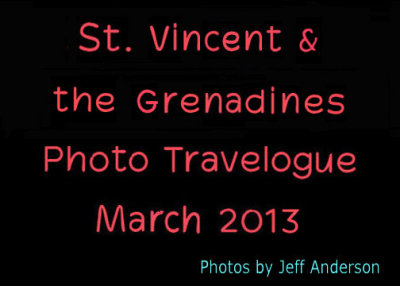
St. Vincent & the Grenadines cover page. |

Map of St. Vincent & the Grenadines with the star indicating the capital, Kingstown. |
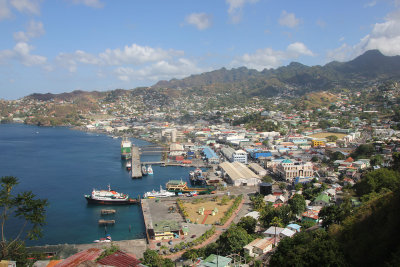
View of Kingstown from the top of a nearby hill. |
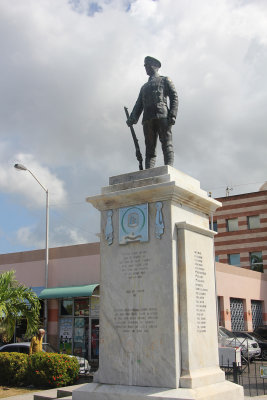
A war memorial to men of St. Vincent who lost their lives in World War I and World War II. |
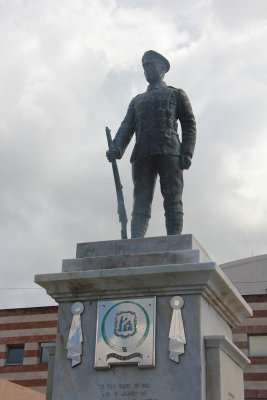
Close-up of the war memorial statue. |
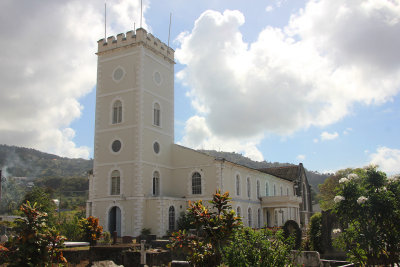
St. George's Cathedral in Kingstown is the largest church in St. Vincent. |
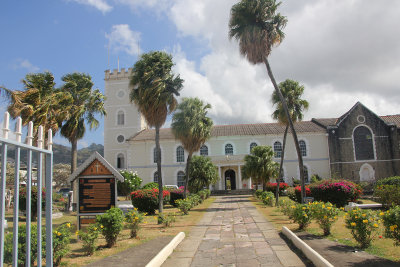
Built on the site of an earlier Anglican Church that was destroyed by a hurricane in 1780, the new church was dedicated in 1820. |
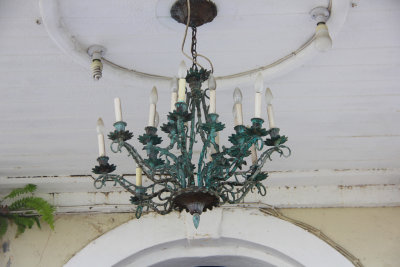
Chandelier at the front outside entrance to St. George's Cathedral. |
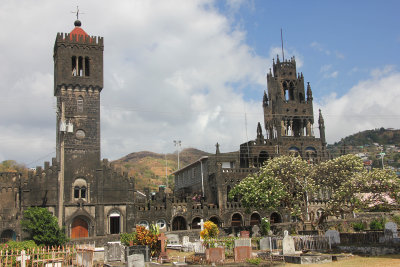
View of graveyard next to St. George's Cathedral with St. Mary's Roman Catholic Cathedral of the Assumption in the background. |
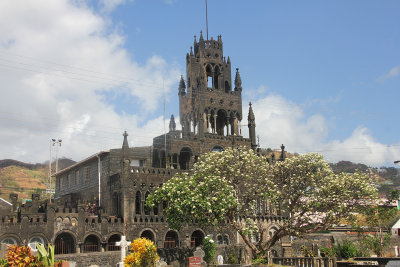
St. Mary's was built in 1823 and damaged in 1875. It was repaired in 1877 and enlarged in 1891. Two wings were added in 1930. |
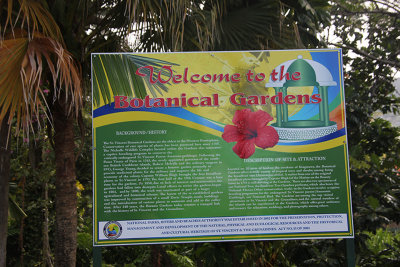
Entrance sign for the St. Vincent Botanical Gardens, which is is one of the oldest in the Western Hemisphere. |
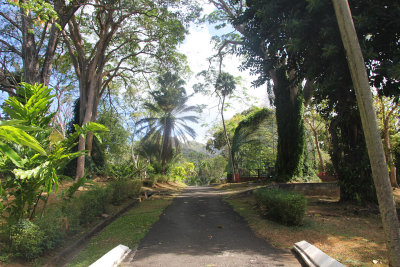
Pathway at the gardens. The gardens were created in 1765 by General Robert Melville, governor of the British Caribbean islands. |
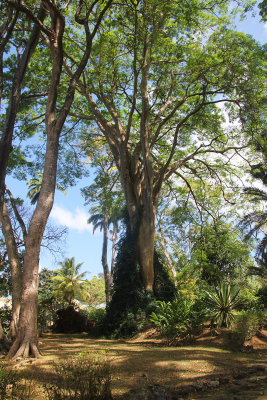
One of the many old large trees at the botanical gardens, which comprise 20 acres. |
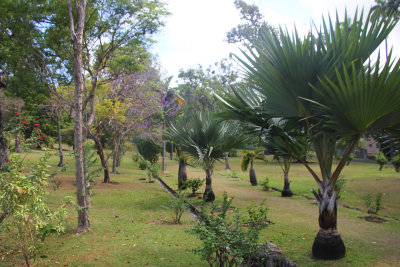
Small palm trees there. |
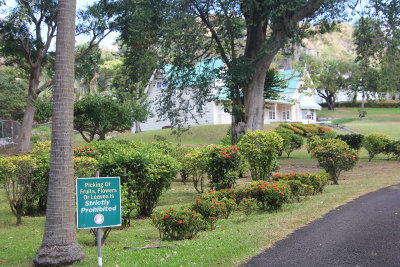
Sign in front of the curator's house. |
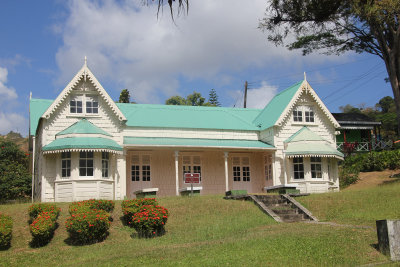
The first curator (from 1779-1783) was Dr George Young, a keen horticulturist and surgeon to the British forces in the region. |
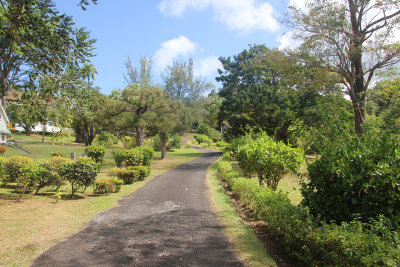
Pathway that passes in front of the curator's house. |

A stunning red tropical flower. |
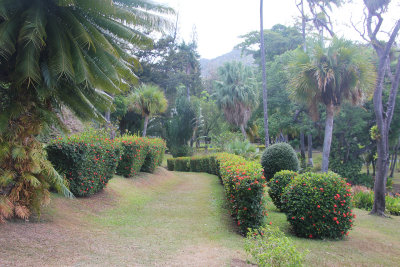
Flowering shrubs and landscaping at the gardens. |
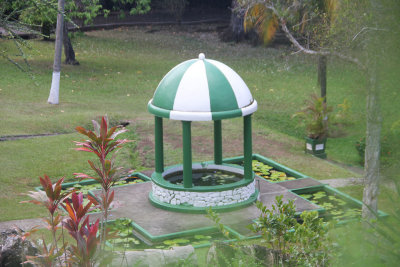
Lily ponds, including one with a domed enclosure. |
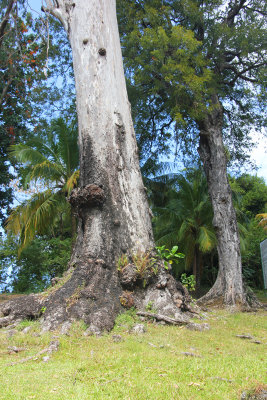
Another one of many species of trees. |
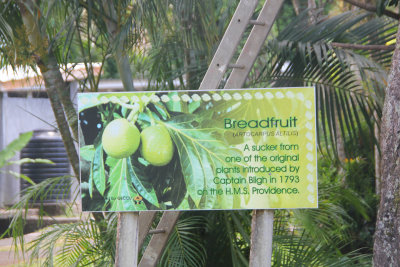
Sign describing the introduction of breadfruit to St. Vincent in 1793 by Captain Bligh. |
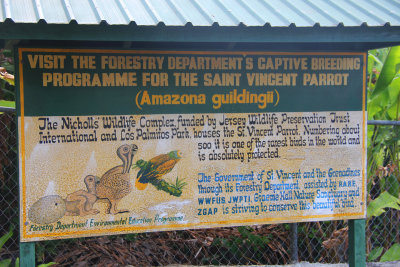
Sign describing the breeding program at the gardens for the St. Vincent parrot. |
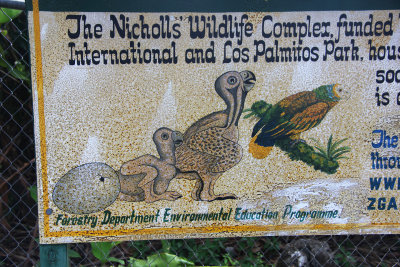
Close-up of the sign illustrating the development of a parrot. |
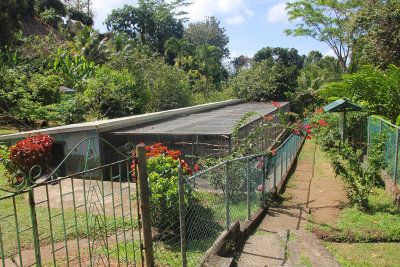
Cages where some of the parrots are kept at the botanical gardens. |
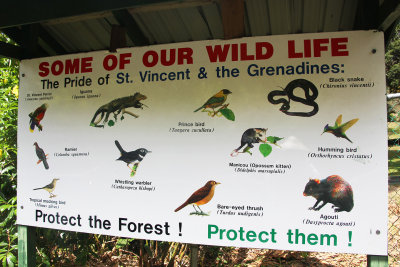
Sign showing some of St. Vincent's wildlife. |
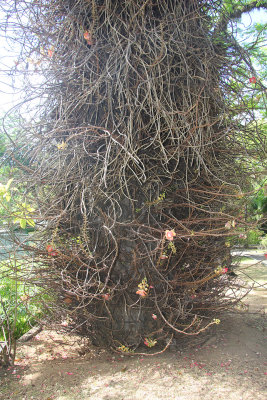
Gnarly vines wrapped around a tree. |
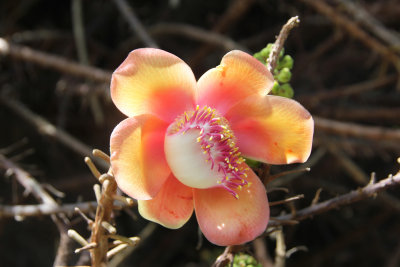
Magnificent Cannonball Tree flower at the botanical gardens |
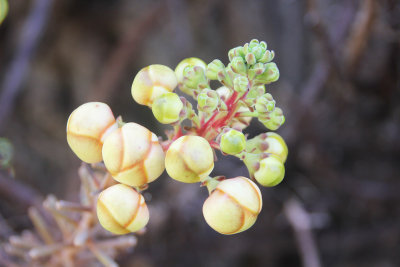
Cannonball tree buds. |
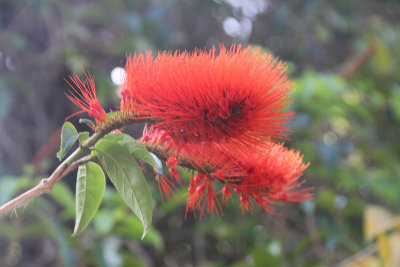
An unusual tropical plant. |
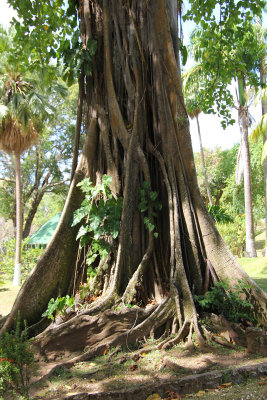
A magnificent tree with sinuous roots and vines. |

Purple blossom at the gardens. |
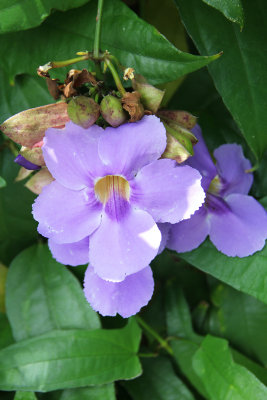
Close-up of more blossoms. |
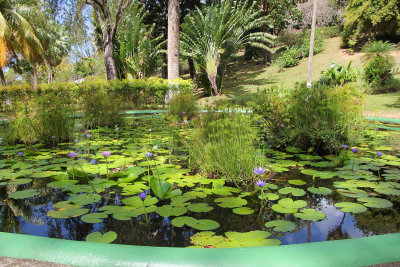
Pond with lily pads. |
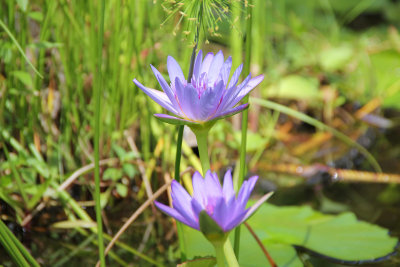
Water lilies in the pond. |
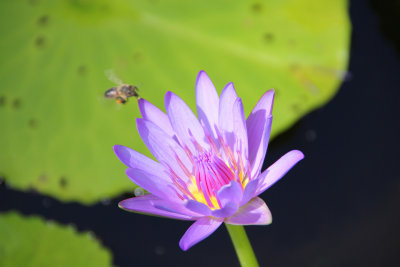
Note the bee flying towards the water lily. |
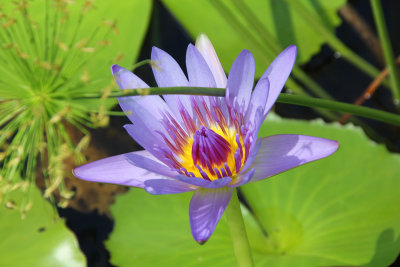
Close-up of one of the water lilies. |
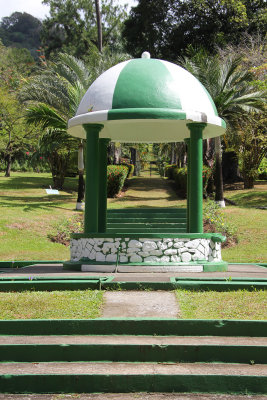
Domed pond with lily pads. |
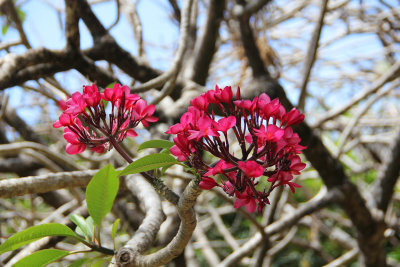
Exquisite red flowers at the botanical gardens. |
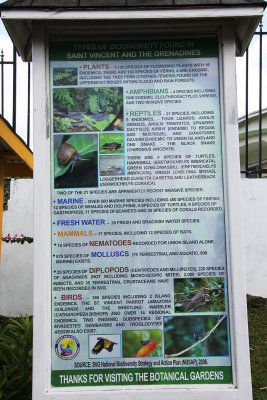
Sign at the exit of the botanical gardens describing the different species of life in St. Vincent. |
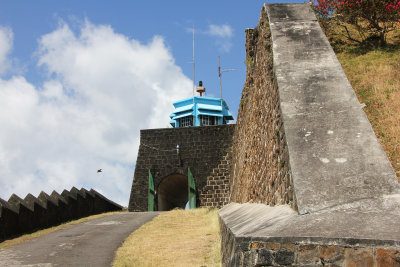
Kingstown is overlooked by Fort Charlotte on Berkshire Hill. View of the entrance. |
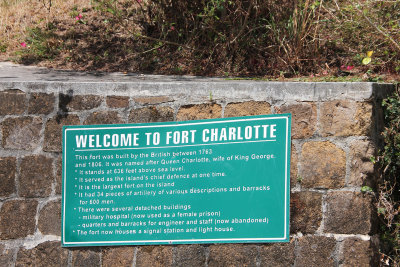
Entrance sign at Fort Charlotte. |
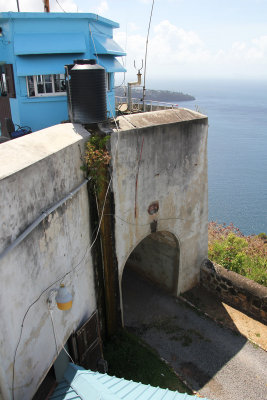
Arched passageway leading in and out of the fort. |
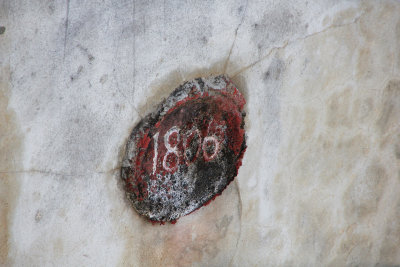
The date over the passageway reads 1806. |
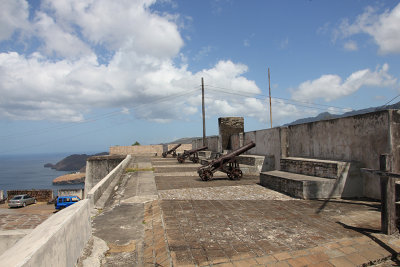
Cannons on Fort Charlotte. It is the major early 19th century fortification on Saint Vincent. |
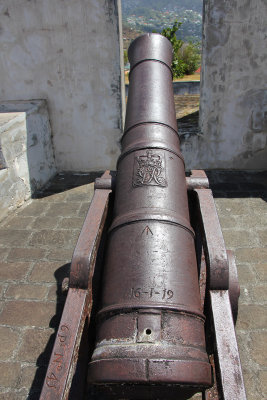
Close-up of British cannon with a royal crest dated January 16, 1819. |
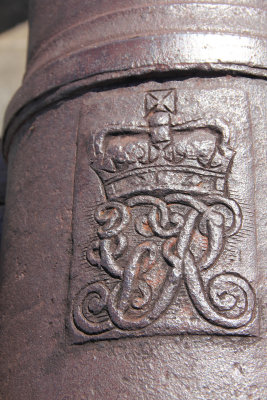
View of a British coat of arms. The fort was named after King George IIIís wife, Queen Charlotte. |
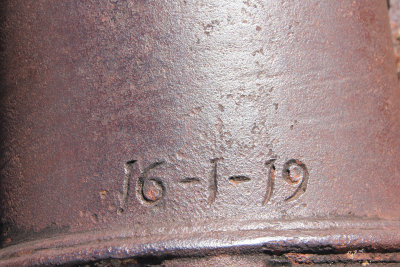
The date on the cannon is January 16, 1819. |
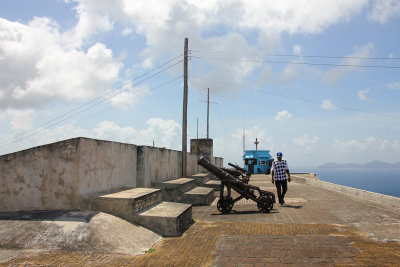
My tour guide walking towards me on Fort Charlotte. |
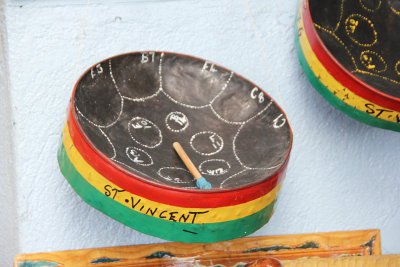
Steel drums in Kingstown. |
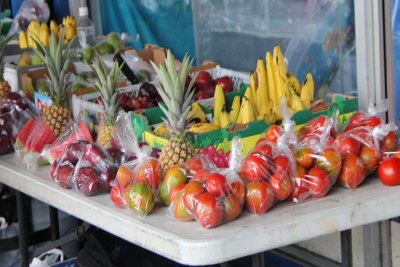
Fruits and vegetables for sale in Kingstown. |
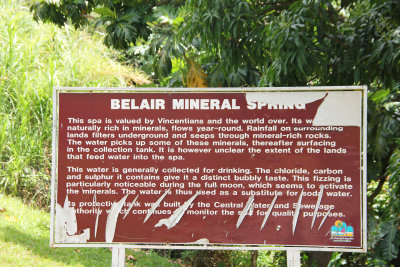
My next stop in St. Vincent was at the Belair Mineral Spring. |
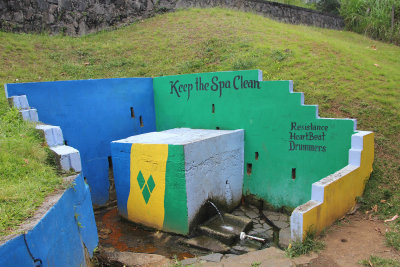
The spring is a popular tourist destination. |
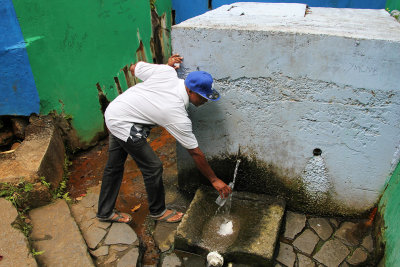
My Guide collecting water at at the spring. It bubbles like soda water. |
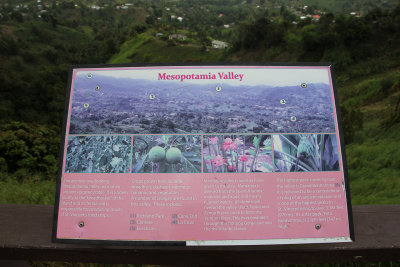
The final stop of my tour was at the Mesopotamia Valley, which is part of an ancient volcanic crater. |
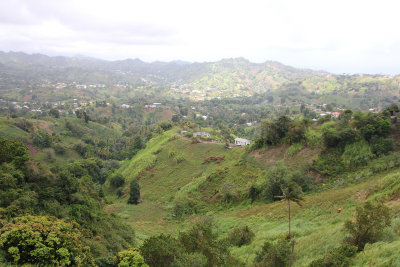
View of the Mesopotamia Valley. It is very fertile and is known locally as St. Vincent's breadbasket. |
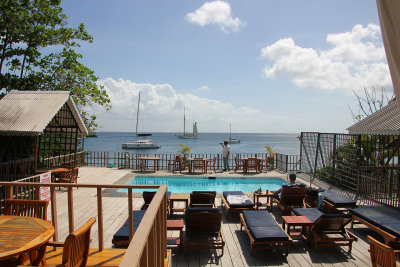
For the remainder of the day, I hung out at the Beachcomber Resort Hotel, a beautiful spot on the Gulf of Mexico. |











